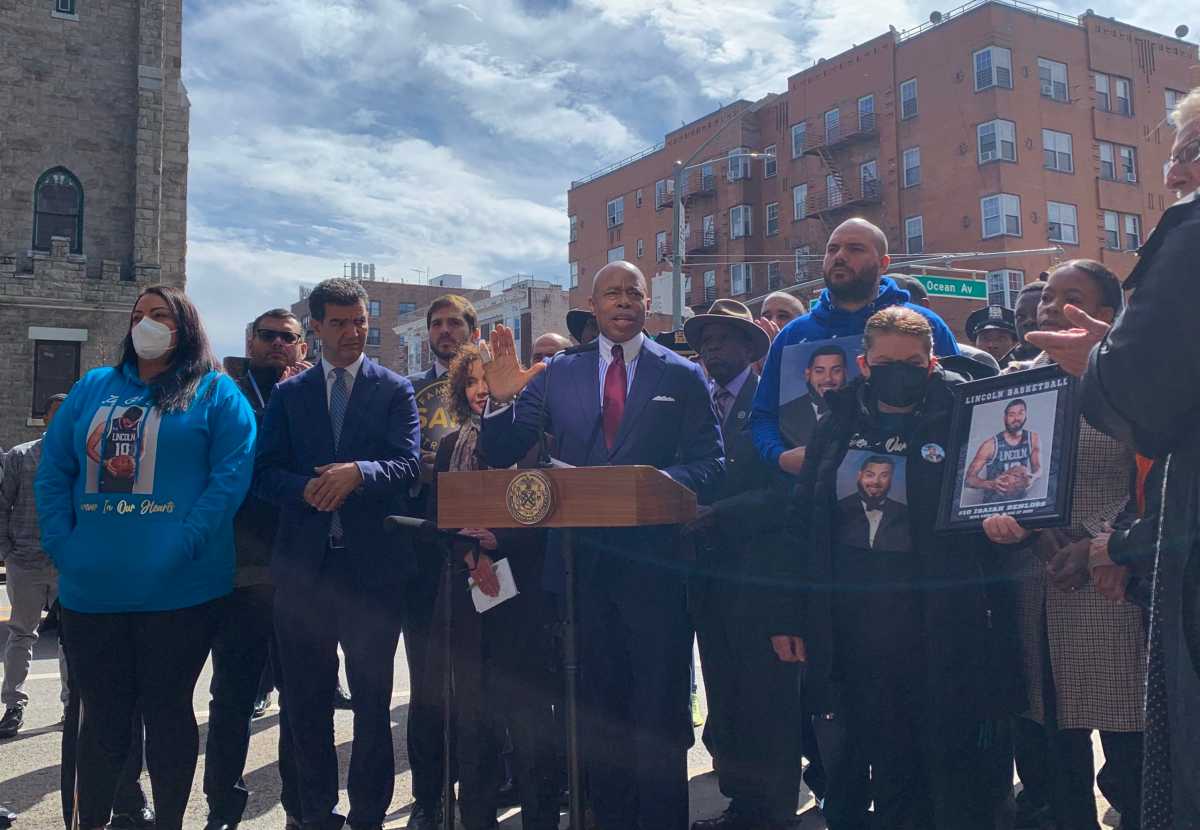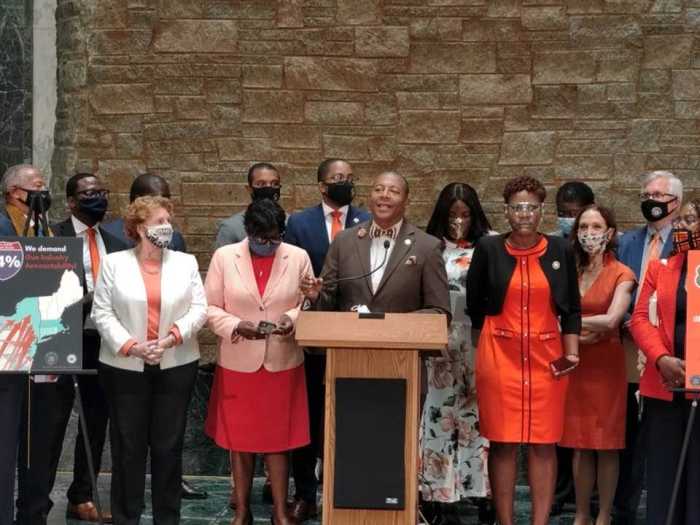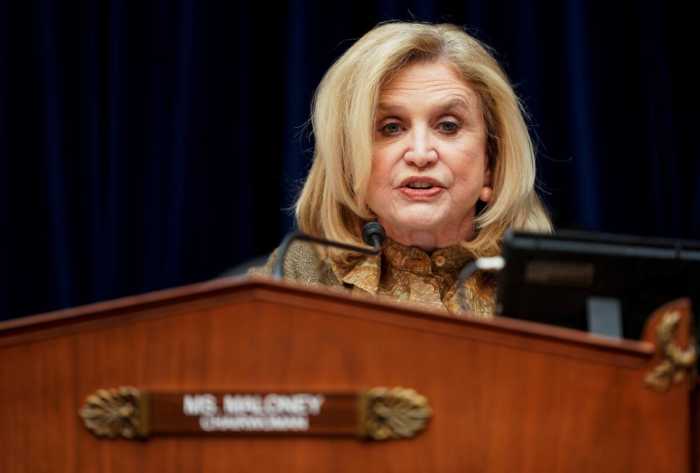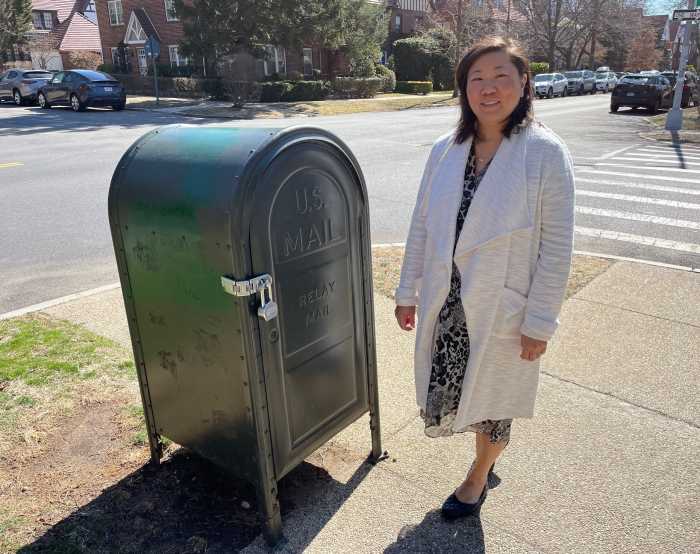Mayor Eric Adams Friday linked the two crises of gun violence and traffic deaths at a rally calling on Albany to give the city control over its network of speed cameras.
Adams said there’s a “fixation” on protecting criminals – whether they commit crimes with guns or vehicles – and that not enough attention is paid to the victims of both types of crimes.
“What about the good people?” Adams said. “What about the people that don’t break the law? What about the people that don’t speed? What about the people that don’t carry guns? Do they matter?”
The mayor then went on to tout the work of the NYPD’s recently reinstated anti-gun units, tasked with taking guns off the streets, saying they just captured 33 guns on Thursday alone. Adams took the opportunity to again push back against criminal justice advocates who’ve criticized the return of the controversial units.
“And people are asking why do I have an anti-gun unit?” Adams said. “What the hell is wrong with you? Because seven-year-old girls should not be shot. I am going to ignore the noise. And I’m going to hear the voices of New Yorkers who are tired of feeling as though the streets are unsafe.”
The new anti-gun units – a uniformed version of the NYPD’s anti-crime units that were disbanded in 2020 following George Floyd’s murder by a Minneapolis police officer – first hit the streets earlier this month in 25 areas across the city.
The main purpose of the rally, however, was to call for the state legislature to transfer control of the city’s school zone speed cameras from Albany to City Hall, amid a surge in traffic violence over the past year. Joining Adams were state Sen. Andrew Gounardes (D – Brooklyn), Councilwoman Rita Joseph (D–Brooklyn), city Department of Transportation Commissioner Ydanis Rodriguez and several safe streets advocates.
Currently, city speed cameras under the state-run “automated enforcement program” are only active from 6 a.m. to 10 p.m. Monday through Friday. So far, Adams said, the cameras have been very effective, reducing speeding violations by an average of 72 percent in the locations they cover during their hours of operation. It’s when the cameras are inactive that the city is seeing major spikes in traffic violence.
If the city gets control of the “automated enforcement program” it would make the cameras operational 24/7.
The event took place at the corner of Ocean Avenue and Beverly Road, where a speeding car ran a red light and hit another car, killing 18-year-old Isaiah Benloss in 2020. The camera at that location, which is near P.S. 245, was turned off when the crash happened at 3 a.m.
“I can’t believe we’re fighting to get control of the speed cameras when you’re seeing a 70% reduction,” Adams said. “This family is mourning. I cannot even imagine losing Jordan at 18. It’s just unbelievable that we are here trying to convince Albany to give us the speed cameras we need that has proven to be successful. The numbers are so clear for how these cameras are helping us.”
Gounardes said while the city has pushed to get home rule over its speed cameras included in this year’s state budgets, both legislative chambers left it out of their one-house budget resolutions, released earlier this month. The state budget is expected to be finalized by an April 1 deadline.
“I’m hopeful, but not super optimistic, that it will be done by next week,” Gounardes said. “But it’s certainly something that we are talking about trying to push on a separate legislative track by the end of this legislative session.”
The “automated enforcement program” expires this July, Gounardes said, so there’s an urgency to renew and expand the program. The Bay Ridge senator added that he also has separate legislation to expand the number of red light cameras across the city.
Adams said the only way the city can reach the Vision Zero goal – set by former Mayor Bill de Blasio – of no traffic deaths across the five boroughs by 2024, is if the city gets control over its traffic cameras.
“Unfortunately, we’re creatures of Albany,” Adams said. “And this is a basic request we’re making – ‘why can’t we control our streets?’ And I believe the more we have the barriers removed from the outside intervention, we can achieve that goal. And we’re going to move towards that.”










